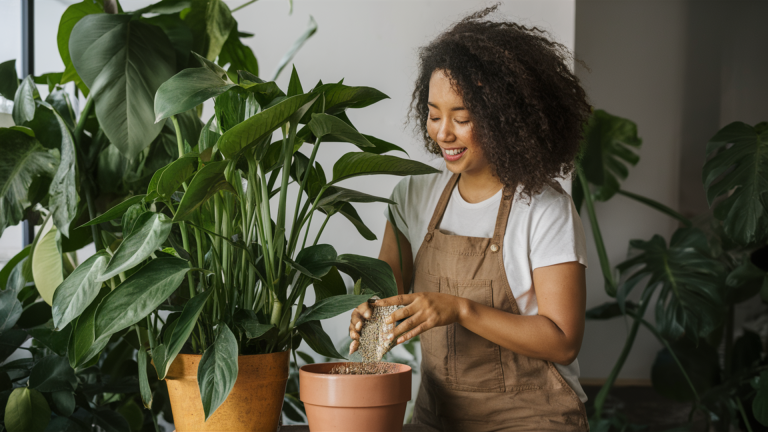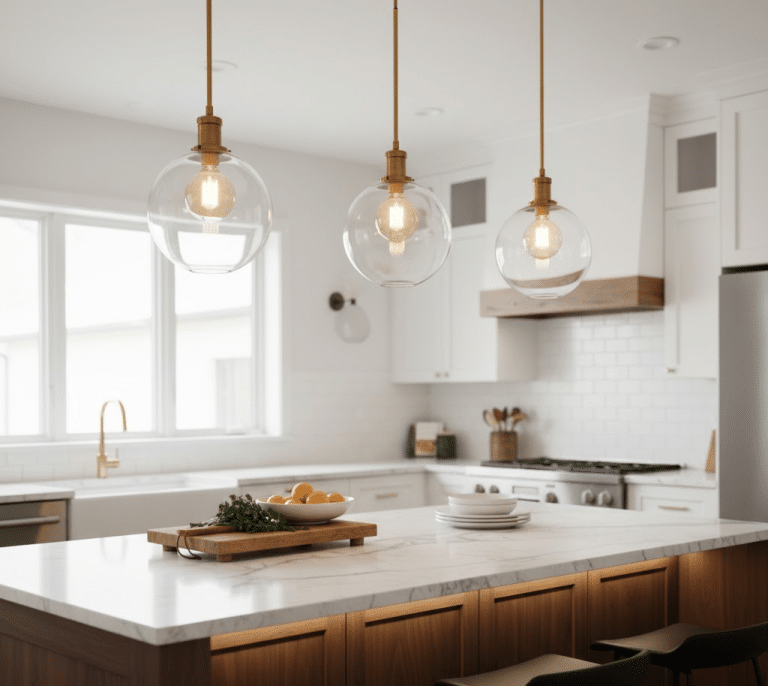Want to give your indoor plants a healthy boost without spending a lot of money? Homemade fertilizer is a great way to keep your plants happy using things you already have at home.
From coffee grounds to banana peels, there are plenty of natural options that can feed your plants and help them grow. These DIY fertilizers are not only budget-friendly but they’re also better for the environment.
No need for harsh chemicals, just simple, safe ingredients from your kitchen. In this blog, I’ll share some of the best homemade fertilizers for indoor plants, how to use them, and why they work.
If you’re new to houseplants or have a growing indoor jungle, these tips will make plant care easier and more fun. Let’s dive in and learn how to make your own plant food the easy way!
Understanding Plant Nutrient Requirements
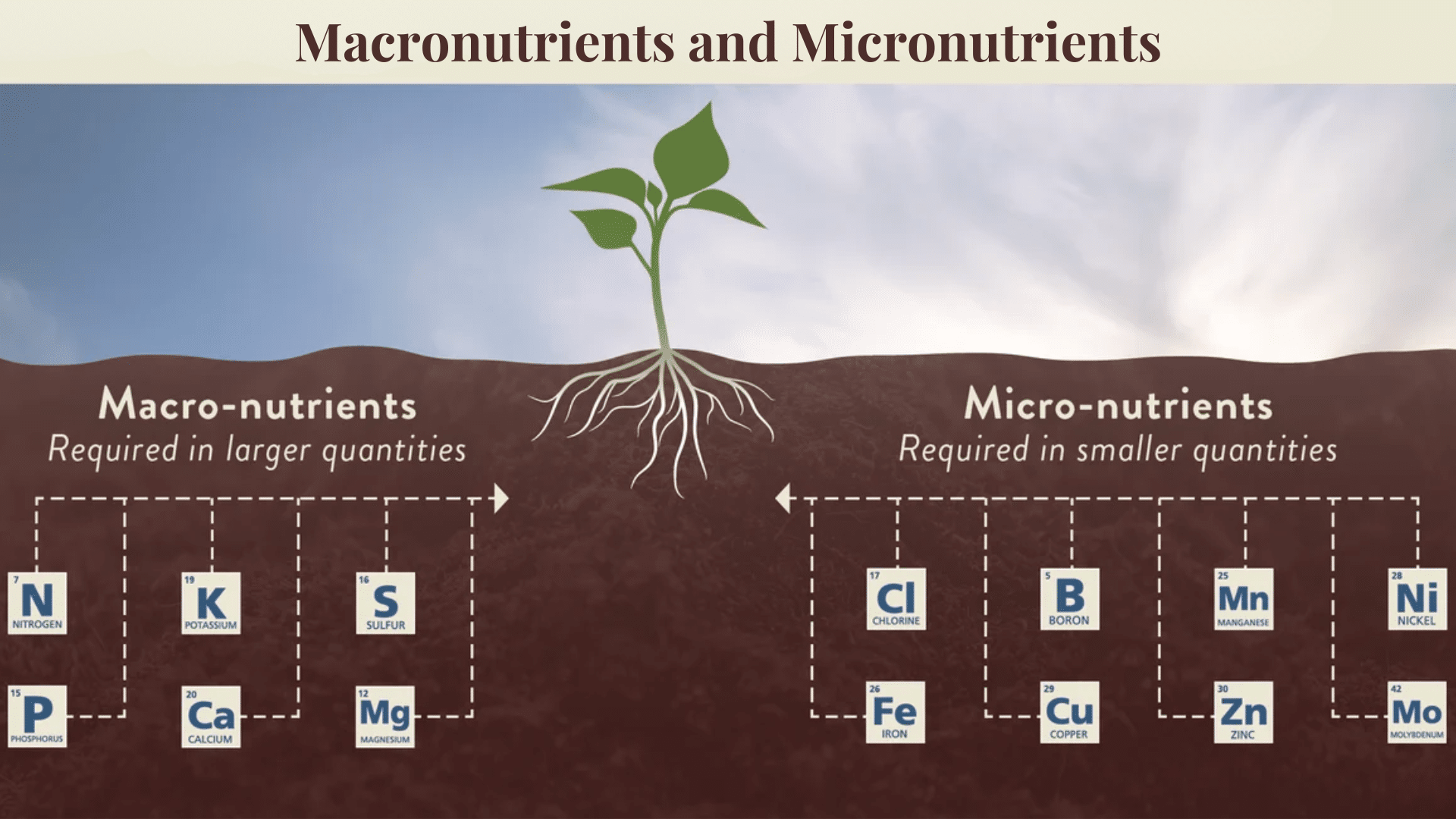
Just like people need food to stay healthy, plants need nutrients to grow strong and stay green. These nutrients help them make leaves, grow roots, and even fight off sickness. Plants need two main types of nutrients: macronutrients and micronutrients.
Macronutrients
These are the big ones, and plants need them the most. The top three are:
- Nitrogen (N): Helps plants grow big, green leaves.
- Phosphorus (P): Good for roots and flowers.
- Potassium (K): Keeps plants strong and helps them fight off disease.
Micronutrients
Plants also need tiny amounts of other nutrients like:
- Calcium: Helps build strong cell walls.
- Magnesium: Helps plants make food from sunlight.
- Sulfur: Helps with growth and green color.
Once you understand the needs of your plants, homemade fertilizers can become a game-changer.
Advantages of Using Homemade Fertilizers for Indoor Plants
Making your own plant food at home is easier than you might think, and it has some awesome benefits.
1. Saves Money: Store-bought plant food can be expensive, especially if you have lots of plants. Homemade fertilizers use things you already have in your kitchen, like banana peels, eggshells, or coffee grounds.
2. Better for the Planet: When you use food scraps instead of throwing them away, you’re helping the environment. Less waste goes into the trash, and your plants get natural, chemical-free nutrients. It’s a win-win!
3. Safe and Natural: Homemade fertilizers are made from real, simple ingredients. You don’t have to worry about mystery chemicals or strong smells, and they’re safer for kids, pets, and even plants.
4. Easy to Make: You don’t need any fancy tools or science skills. Most homemade fertilizers are as easy as soaking a banana peel in water or crushing eggshells. Anyone can do it!
5. Good for the Soil: Natural fertilizers don’t just feed your plants. They also help the soil stay healthy. Healthy soil means your plants grow stronger and need less help in the future.
Want to go green, save money, and help your plants thrive? Homemade fertilizers are the answer!
Top Homemade Fertilizers for Indoor Plants
There are so many things you already have at home that can help feed your indoor plants. These natural fertilizers are simple to use, safe, and full of the nutrients your plants need to grow strong and healthy.
1. Coffee Grounds
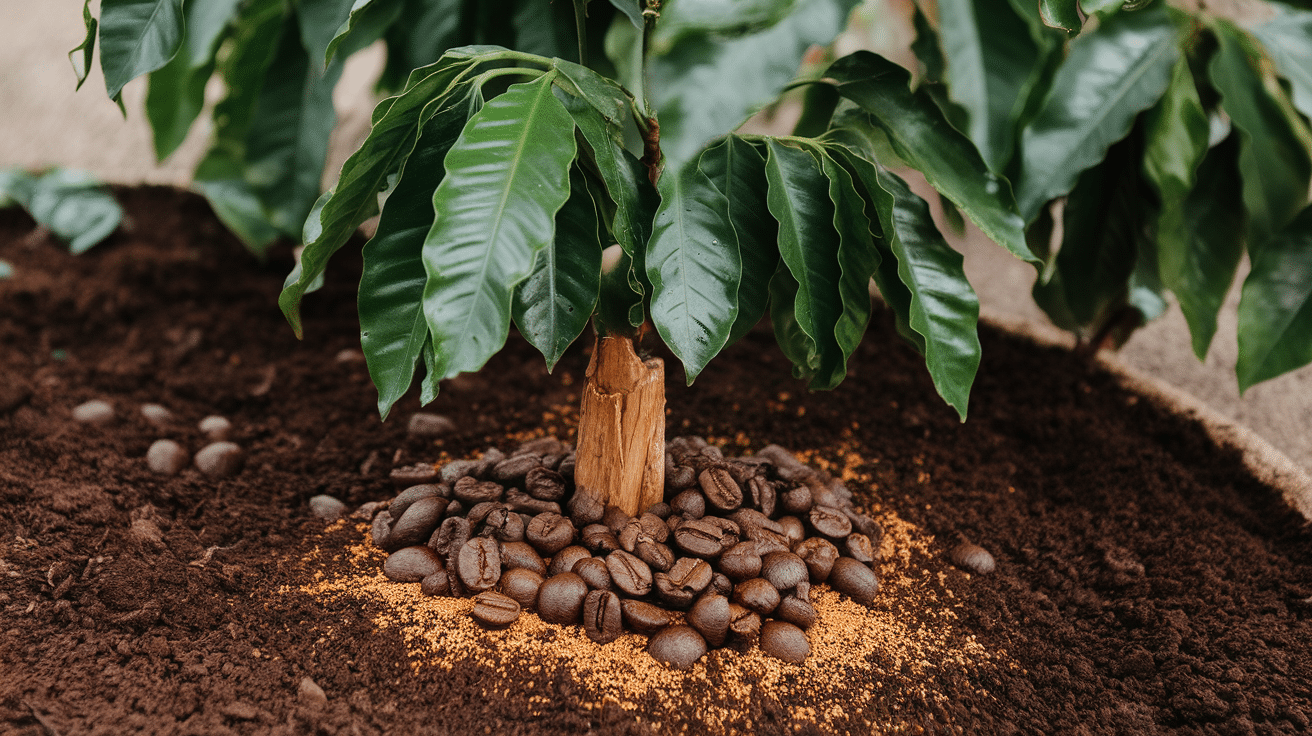
If you drink coffee, don’t toss out those used grounds! Coffee grounds are full of nitrogen, which helps plants grow more leaves and stay green.
How to use:
- Let the coffee grounds dry out, then sprinkle a small amount on top of the soil.
- You can also mix them into the soil when you repot a plant.
- For a lighter option, soak used coffee grounds in water overnight and use that water to feed your plants.
Tip: Coffee is a little acidic, so it’s best for plants that like acidic soil, like ferns or peace lilies. Don’t overdo it—too much can make the soil too strong.
2. Banana Peels

Banana peels are loaded with potassium and phosphorus. These nutrients help with root growth, strong stems, and blooming flowers.
How to use:
- Cut up the peels into small pieces and bury them in the soil around the plant.
- You can also soak banana peels in water for 2–3 days to make a “banana tea.” The water can then be used to feed your plants.
Tip: If you’re burying banana pieces, keep them small to avoid attracting bugs.
3. Eggshells

Eggshells are a great source of calcium. Calcium helps build strong plant cell walls, which makes your plants more sturdy.
How to use:
- Rinse out used eggshells and let them dry.
- Crush them into small pieces or grind them into a powder using a blender.
- Sprinkle the crushed shells on top of the soil or mix them in.
Bonus idea: Soak crushed shells in water overnight to make “eggshell tea.” Pour this on your plants once a week.
4. Epsom Salt
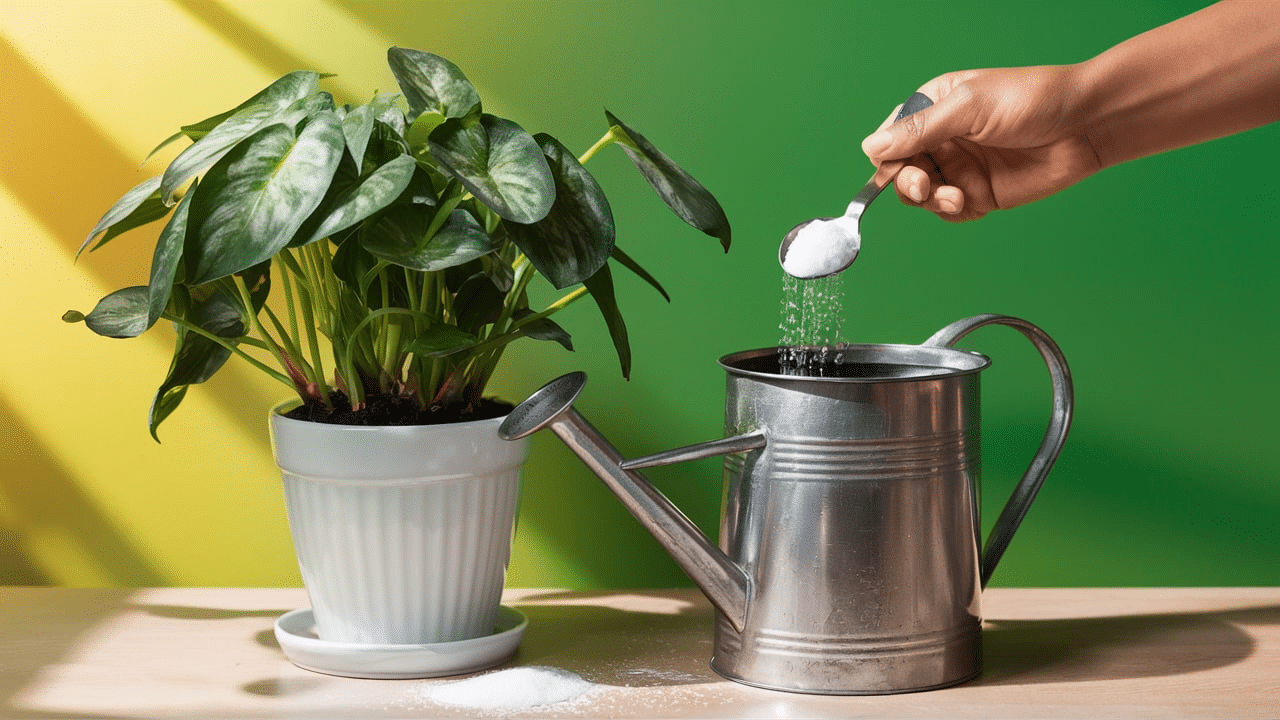
Epsom salt isn’t just for baths—it’s also great for plants! It gives your plants magnesium and sulfur, which help with photosynthesis (how plants turn sunlight into food).
How to use:
- Mix 1 teaspoon of Epsom salt in 1 liter of water.
- Pour this mix into the soil once every few weeks, or spray it on the leaves.
Note: This works best for plants like peppers, tomatoes, and roses, but houseplants love it too in small amounts.
5. Aquarium Water
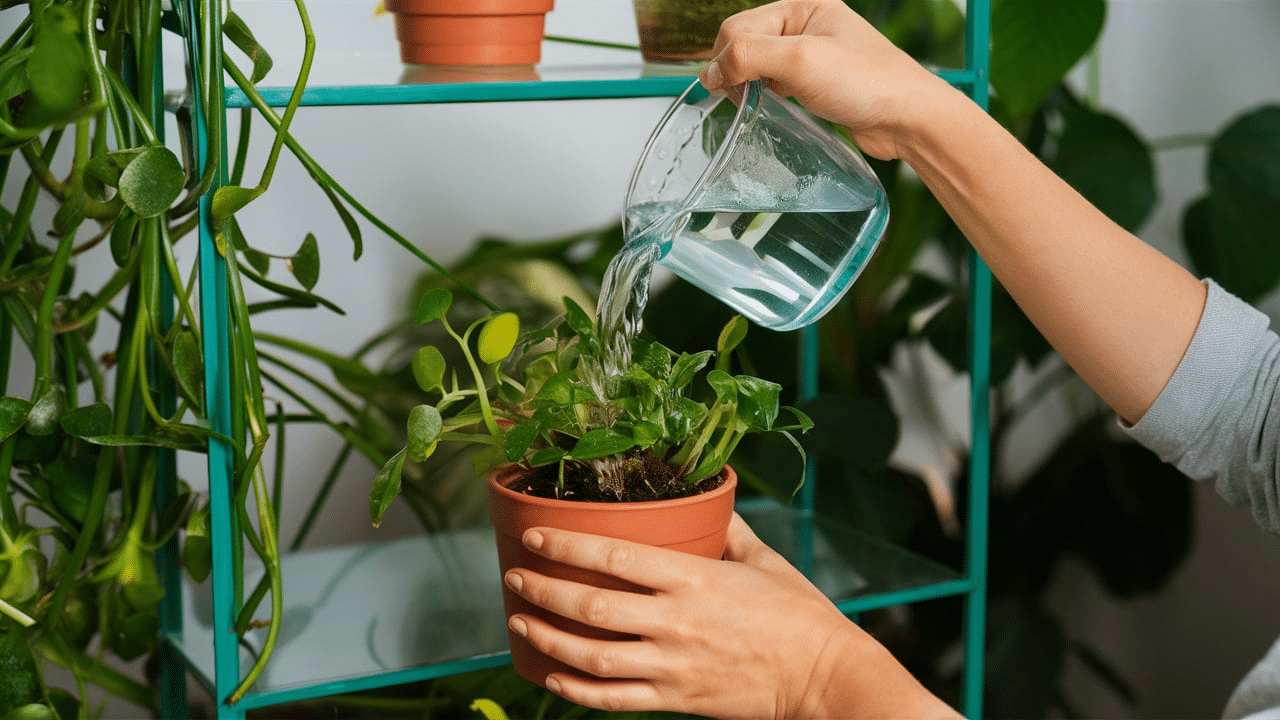
If you have a fish tank, you already have a great natural fertilizer. Old aquarium water is full of helpful bacteria and nutrients from fish waste.
How to use:
- When you clean your tank, save the old water and use it to water your plants.
Tip: Only use water from freshwater tanks—never use salty or treated water.
6. Molasses
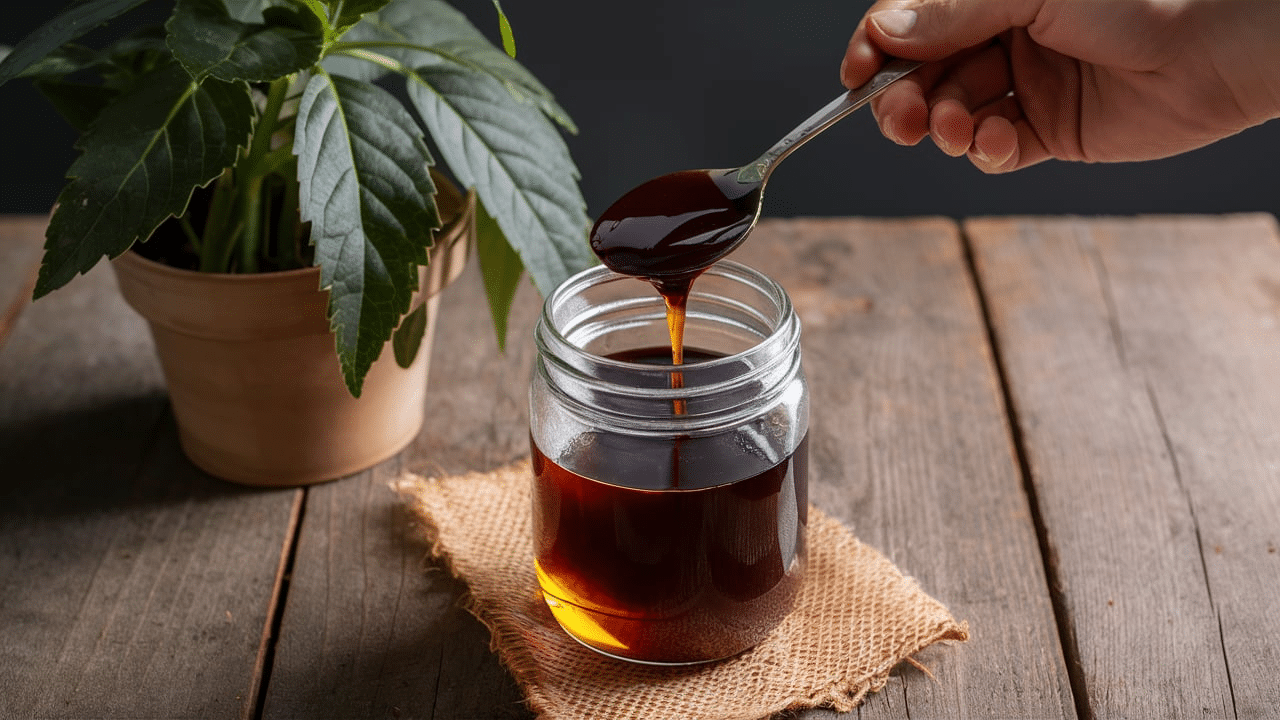
Molasses (the thick, sweet syrup from sugar) is packed with nutrients like iron, potassium, and sulfur. It also feeds the good bacteria in the soil, which helps plants grow better.
How to use:
- Mix 1 tablespoon of unsulfured molasses into 1 gallon of water.
- Water your plants with it once every few weeks.
7. Green Tea

Green tea isn’t just good for people—it’s also good for your plants! It has tannins and a small amount of nutrients that improve soil quality.
How to use:
- Brew a weak cup of green tea, let it cool, and pour it on your plants.
- You can do this once every 4 weeks.
Tip: Don’t use tea with added flavors or sugar.
8. Vegetable Cooking Water
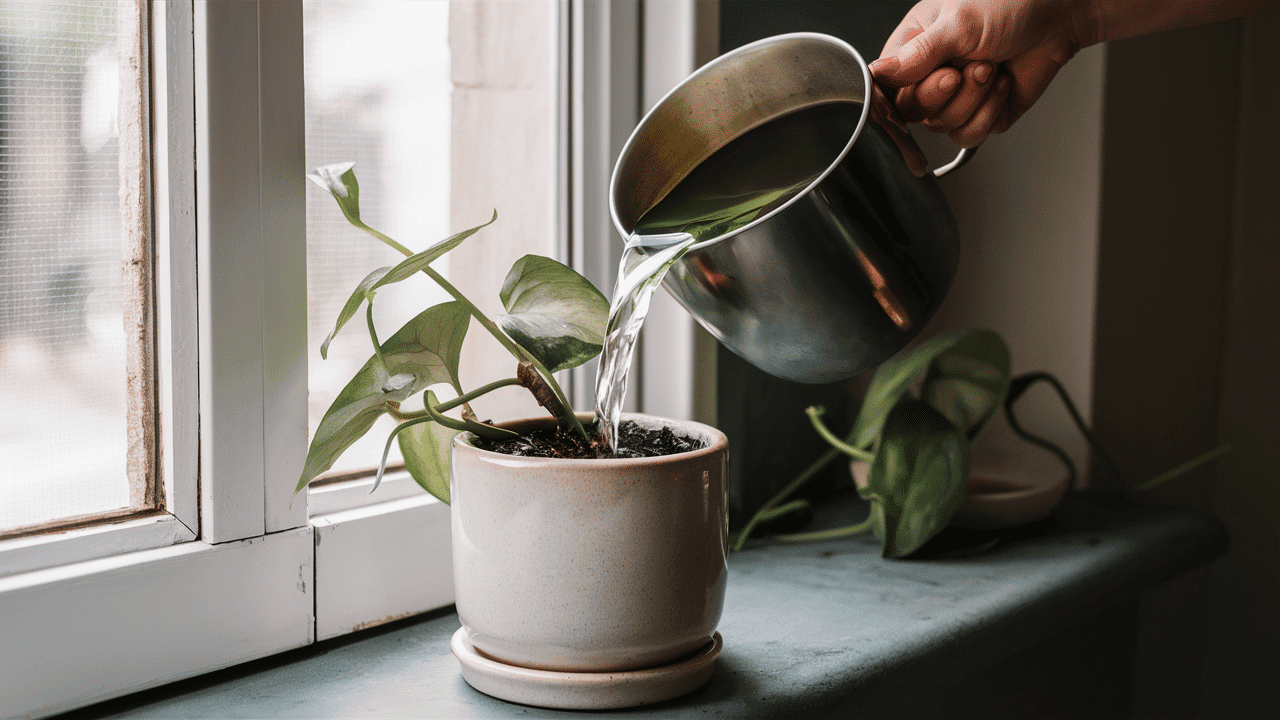
When you boil vegetables like carrots, spinach, or potatoes, don’t pour the water down the drain. That water is full of vitamins and minerals your plants will love.
How to use:
- Let the water cool completely.
- Use it to water your indoor plants once a week.
Important: Don’t use water that has salt, oil, or spices in it. Plain veggie water only!
These homemade fertilizers are simple, safe, and super helpful for your plants. You can try one at a time or mix it up depending on what you have at home. Just remember, too much of anything, even natural stuff, can harm your plants. Start slow and see how your plants respond.
Applying Homemade Fertilizers on Indoor Plants
Now that you know which homemade fertilizers are best for your indoor plants, the next step is learning how to use them the right way. Using too much, too often, or at the wrong time can hurt your plants instead of helping them.
Indoor plants don’t need food every day. In fact, feeding them too much can cause problems. Here’s a general guide to help you:
- Every 2–4 weeks: Use liquid fertilizers like banana peel water, green tea, or a molasses mix.
- Every 1–2 months: Add solid fertilizers like coffee grounds, eggshells, or banana peels into the soil.
Always check how your plant is doing. If it’s growing well and looks healthy, you might not need to fertilize it as often. If the leaves turn yellow or growth slows down, it could be time to feed it.
Best Ways to Apply Homemade Fertilizer
There are a few easy ways to give homemade fertilizer to your plants. Each method works a little differently, so choose the one that fits what you’re using.
1. Watering with Liquid Fertilizer
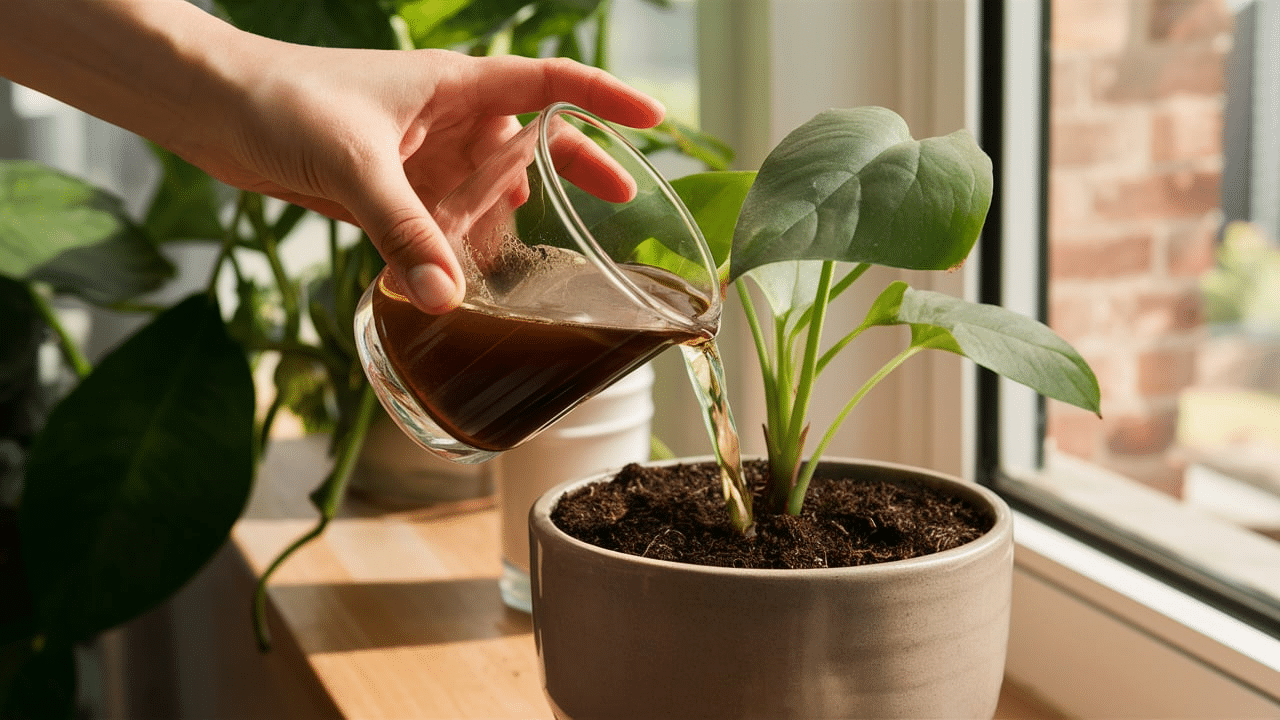
This method is great for things like banana water, eggshell tea, green tea, or Epsom salt mix.
How to do it:
- Let the tea or mix cool to room temperature.
- Pour it directly into the soil just like you would with plain water.
- Use this every couple of weeks, depending on your plant’s needs.
Tip: Don’t soak the soil too much—just enough so the roots can absorb the nutrients.
2. Mixing into the Soil
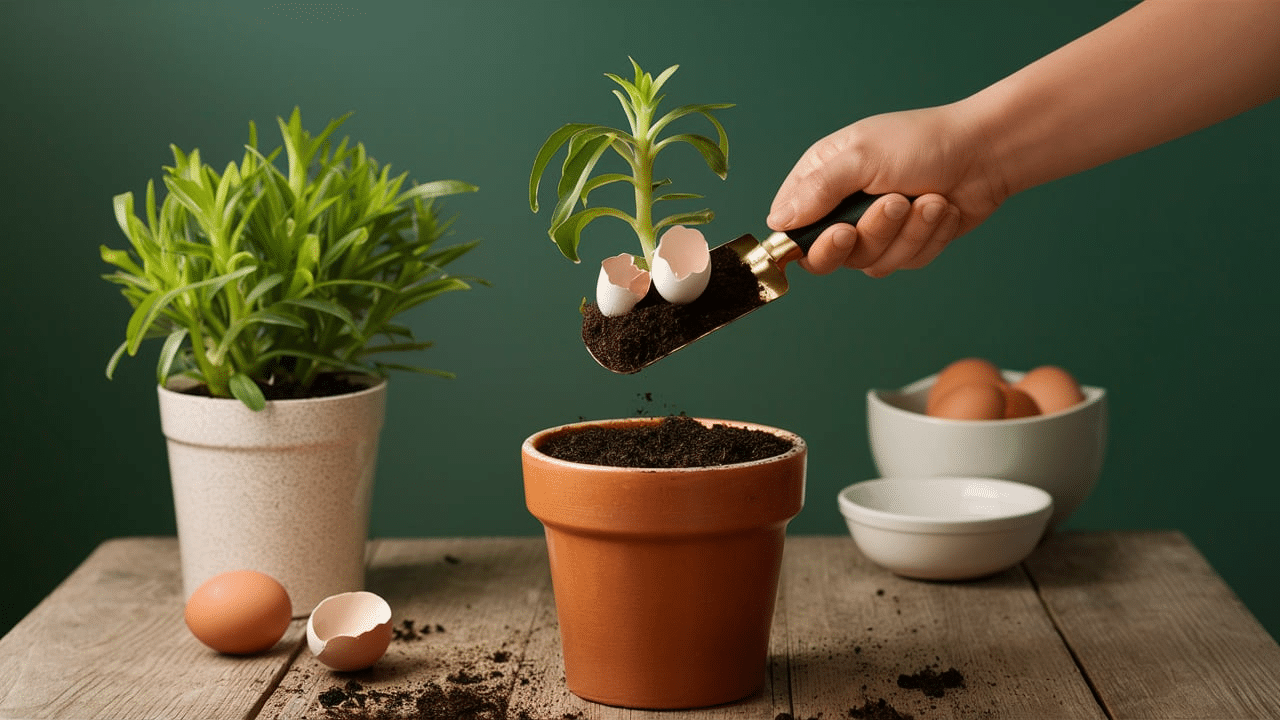
This works well for solid items like crushed eggshells, coffee grounds, or chopped banana peels.
How to do it:
- Gently remove the top layer of soil.
- Mix in your fertilizer (a spoonful is plenty for a small plant).
- Cover it back up and water the plant.
Tip: Don’t add too much at once. It’s better to feed small amounts over time.
3. Top-Dressing
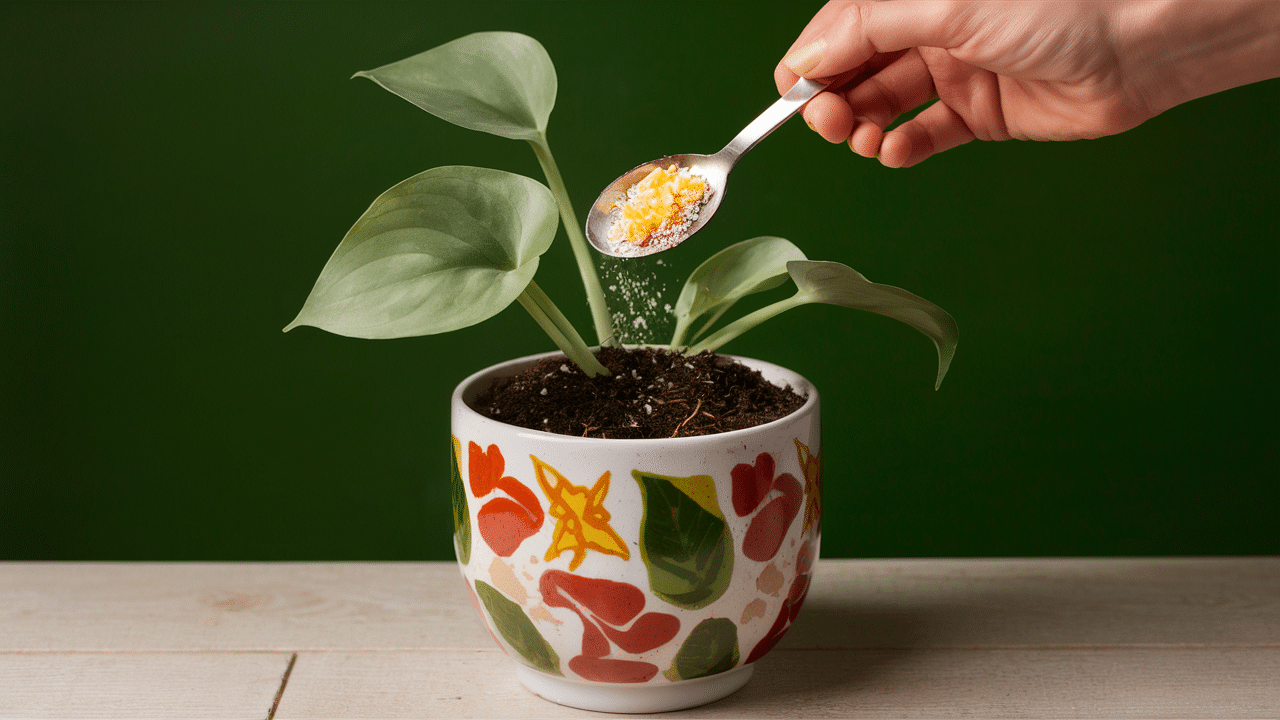
This is when you sprinkle the fertilizer on top of the soil without mixing it in. It works for dry coffee grounds or crushed eggshells.
How to do it:
- Spread a thin layer on top of the soil (not too thick).
- Water the plant normally so the nutrients soak in over time.
Tip: Watch out for mold or bugs—if you see any, remove the fertilizer and try a different method.
4. Foliar Spray (Spraying on Leaves)
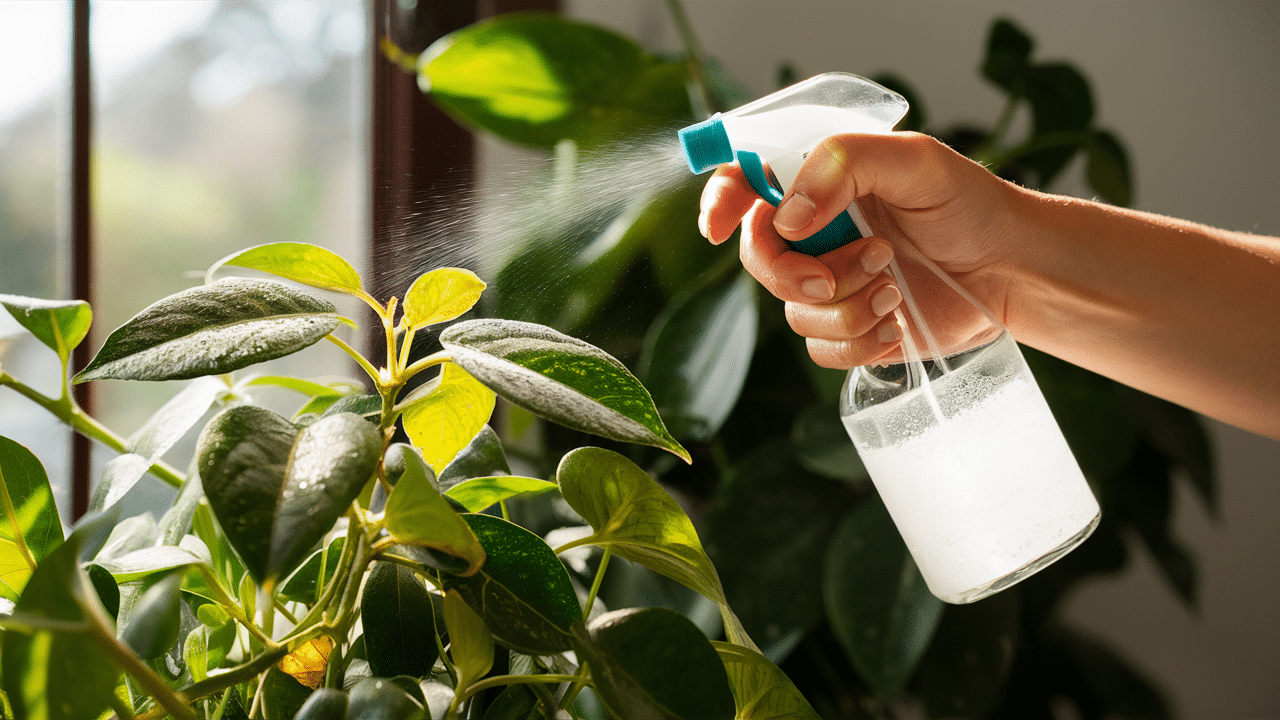
This method is great for very weak fertilizer mixes like Epsom salt water or compost tea.
How to do it:
- Pour the mix into a clean spray bottle.
- Lightly spray the leaves (top and bottom) in the morning or evening.
- Don’t spray too much—just enough to coat the leaves.
Tip: Test it on one leaf first to make sure your plant doesn’t react badly.
Fertilizing your indoor plants with homemade options doesn’t have to be hard. Stick to a simple schedule, use the right method, and keep an eye on your plants. With time, you’ll get a feel for what each one needs—and they’ll reward you with bright, healthy growth!
Precautions When Using Homemade Fertilizers
Homemade fertilizers are a great way to feed your plants naturally, but it’s still important to use them correctly. A few simple steps can keep your plants happy and safe.
-
Don’t overdo it. Too much fertilizer—even natural ones—can burn your plants. Start with small amounts.
-
Avoid salty or oily leftovers. Never use cooking water with salt, oil, or spices. These can harm your plant’s roots.
-
Use fresh ingredients. Don’t use anything that smells bad or is moldy.
-
Watch for bugs. To avoid attracting gnats or fruit flies, bury food scraps like banana peels deep in the soil.
-
Test new methods. Try your homemade mix on one plant before using it on all of them.
-
Keep the soil balanced. Using the same fertilizer too often can change the soil’s pH. Mix things up from time to time.
-
Store leftover liquid safely. If you make banana tea or eggshell water, use it within a few days. Don’t let it sit too long.
A little caution goes a long way when using homemade fertilizers. Keep it simple, pay attention to how your plants react, and you’ll be on your way to a thriving indoor garden—naturally!
Conclusion
Homemade fertilizers are an easy, affordable, and eco-friendly way to keep your indoor plants healthy and growing. With simple ingredients like banana peels, coffee grounds, eggshells, and more, you can create natural plant food right from your kitchen.
These DIY options not only save you money but also help reduce waste and keep harmful chemicals out of your home. Just remember to start small, watch how your plants respond, and avoid using too much at once.
Every plant is different, so it may take a little experimenting to find what works best. But with a little care and attention, your indoor garden will thank you with fresh, green leaves and beautiful growth.
So next time you’re about to throw something away, think again—it might just be the perfect treat for your plants!


